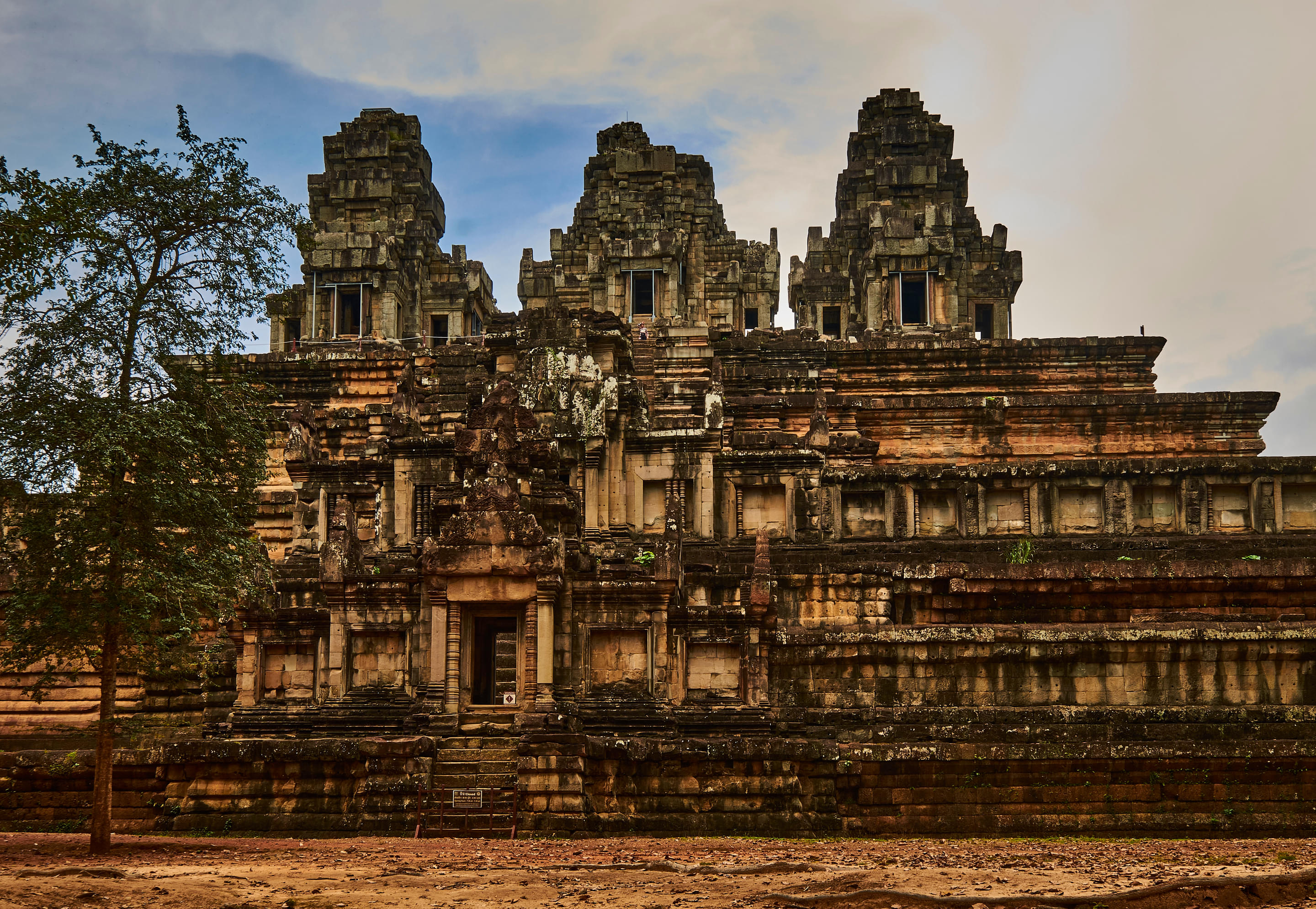About Ta Keo
Ta Keo, a monumental temple mountain nestled within the Angkor Archaeological Park in Cambodia, stands as a striking testament to the Khmer Empire's architectural ambition and religious fervor. Commissioned by King Jayavarman V in the late 10th century, Ta Keo was intended to be one of the grandest structures of its time, though it remains unfinished to this day.
Rising dramatically from the surrounding landscape, Ta Keo's towering sandstone walls and steep staircases evoke a sense of awe and reverence. Its massive proportions and symmetrical layout reflect the Khmer Empire's pursuit of architectural perfection and spiritual significance.
Despite its incomplete state, Ta Keo's intricate carvings and bas-reliefs showcase the exquisite craftsmanship of ancient Khmer artisans. Scenes from Hindu mythology and celestial beings adorn its weathered walls, offering glimpses into the empire's religious beliefs and cultural heritage.
Exploring Ta Keo allows visitors to immerse themselves in Cambodia's rich history and unravel the mysteries of its ancient past. As travelers ascend its imposing staircases and wander through its sacred courtyards, they are transported back in time, marveling at the ingenuity and grandeur of Khmer architecture.
Ta Keo serves as a poignant reminder of the Khmer Empire's legacy and enduring influence, inviting travelers to contemplate the intersection of history, culture, and spirituality in this captivating corner of Southeast Asia.










.jpg?w=1280&dpr=1)



